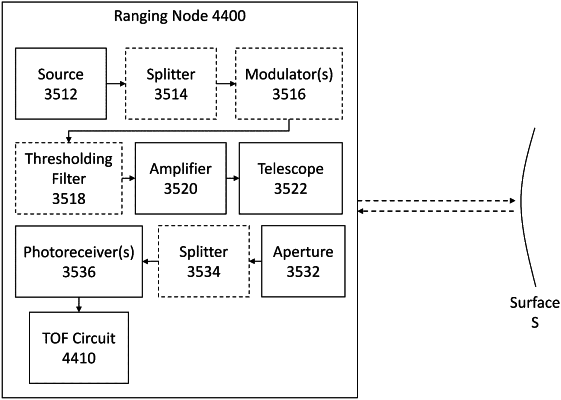| CPC H04B 10/1123 (2013.01) [H04B 10/1129 (2013.01)] | 20 Claims |

|
1. An optical communication system for optically transmitting data through a variably refractive medium, the optical communication system comprising:
a continuous wave optical source configured to generate a beam, wherein the optical communication system is configured to gate the beam of light into a series of light pulses;
a modulator configured to modulate the series of light pulses in response to a data transmission signal, thereby encoding transmission data into the series of light pulses;
a photoreceiver, the photoreceiver having:
a detection window duration of 1 nanosecond or less; and
a detection condition, wherein the photoreceiver is configured to indicate whether a received optical energy during a given detection window duration satisfies the detection condition, thereby extracting specific encoded data from the received optical energy;
wherein:
the series of light pulses comprises a first pulse having a coherence length of less than 400 microns;
when the first pulse travels through the variably refractive medium, photons in the first pulse are refracted to travel along different ray paths having different lengths to the photoreceiver;
the photons of the first pulse arrive at the photoreceiver according to a temporal distribution curve that depends, at least in part, on a duration of the first pulse and lengths of the different ray paths taken by the photons in the first pulse to the photoreceiver;
a full-width-at-half-maximum value (FWHM value) of the temporal distribution curve is greater than a coherence time value equal to the coherence length of the first pulse divided by a speed of light through the variably refractive medium; and
the detection window duration of the photoreceiver is greater than the FWHM value of the temporal distribution curve.
|